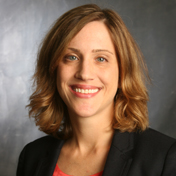The Federal Reserve decision to raise interest rates for the first time in eight years last December was hardly a surprise — it had been widely anticipated for months. However, since the quarter-percent interest rate hike has gone into effect, the markets have been decidedly volatile.
This week, Fed Chair Janet Yellen sounded a cautious note to House and Senate committees, saying that financial conditions in the U. S. have recently become less supportive of growth.
While December’s interest rate decision, the plummeting price of oil and China’s financial crisis all are being discussed as possible reasons for the turmoil, Washington University in St. Louis financial economics expert Jennifer Dlugosz said there’s no solid evidence pointing to any one of those factors just yet.

“It is a bit of a mystery what is going on in the markets and why they are so up-and-down,” said Dlugosz, PhD, assistant professor of finance at Olin Business School. “Sometimes when you try to explain the moves in the markets, you find that there’s not a completely satisfying story based on fundamentals.
“A decline in the price of oil should be a good thing for a country that is a net importer, like the U.S. It’s also hard to see why the slowdown in China would have such a large effect on U.S. stock prices. There may be some investor psychology or confidence issues coming into play,” Dlugosz said.
After December’s rate hike, there were predictions that the Fed would continue to raise interest rates in 2016. The next opportunity to do so would be at its policy meeting in March, but according to Dlugosz, the likelihood of another rate hike so soon remains uncertain.
“There’s a gap between what the market seems to be expecting of the Fed and what the Fed is claiming it’s going to do,” she said. “If you look at futures markets, they seem to be suggesting there’s not going to be another rate increase until the end of the year or even next year. And yet, you have Fed officials out there saying that they expect this gradual pace of increase to continue and they see us being at one percent by the end of the year, so there is a bit of a gap there.”
Dlugosz points to the Fed’s two-percent inflation target as a major factor in future rate hike decisions. A December projection showed inflation isn’t likely to go above two percent for the next three years, which makes determining its next moves even more complicated for the Fed.
“The big question for the Fed now is ‘Is it the right time to move?’ and it’s a tricky question to answer,” Dlugosz said. “We know that monetary policy acts with a lag, so they don’t want to wait until inflation is already above two percent, to start moving.
“On the other hand, you don’t want to move too soon. So they’re in this tricky position of having to read the signal from lots of noisy data that’s out there.”
Previously, Dlugosz was an economist at the Board of Governors of the Federal Reserve System in Washington, D.C. She is available for interviews and may be reached at jdlugosz@wustl.edu
